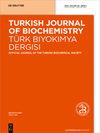The importance of quality planning tools in clinical chemistry laboratory
IF 0.7
4区 生物学
Q4 BIOCHEMISTRY & MOLECULAR BIOLOGY
Turkish Journal of Biochemistry-turk Biyokimya Dergisi
Pub Date : 2014-01-01
DOI:10.5505/TJB.2015.80488
引用次数: 0
Abstract
Objective: Quality planning in a laboratory can be defined as designing quality wanted or required for a test. The objective of a suitable choice is to determine the most efficient quality control rules and the number of control measurements. The aim of this study is to evaluate the features of the tools of quality planing while choosing quality control procedure. Methods: In this study, the tools of quality planing used to choose quality control procedure were operated for the data generated by simulation. These tools were created for both clinical decision interval and total analytical error model. EZ Rules 3.0 programme was used to obtain OPSpecs chart and critical error chart for both models. Results: In critical error chart, in clinical decision interval model, N=4, R=1 as control procedures, probability of detecting error is over 90% and probability of refusing wrong is less than 5%, in total analytical error model, probability of error detecting is almost 100%, probability of refusing wrong is less than 5%. Procedures applicable to total analytical error model and clinical decision interval model of OPSspecs model are N=4 and R=1. Conclusion: As a result, the number of control measurements required based on random and systematic error observed in the measurement procedure, and the above mentioned approaches, which facilite selecting control rules are important for quality control evaluations in clinical chemistry laboratories. In addition they are difficult to comment and to obtain without software.质量策划工具在临床化学实验室中的重要性
目的:实验室的质量策划可以定义为设计测试所需或所需的质量。一个合适的选择的目标是确定最有效的质量控制规则和控制测量的数量。本研究的目的是在选择质量控制程序时,评估质量计划工具的特点。方法:采用质量计划工具对仿真数据进行质量控制程序选择。这些工具是为临床决策区间和总分析误差模型创建的。使用EZ Rules 3.0程序得到两种模型的OPSpecs图和临界误差图。结果:在临界错误图中,在临床决策区间模型中,以N=4, R=1为控制程序,发现错误的概率大于90%,拒绝错误的概率小于5%,在总分析错误模型中,发现错误的概率几乎为100%,拒绝错误的概率小于5%。适用于OPSspecs模型的总分析误差模型和临床决策区间模型的程序为N=4, R=1。结论:基于测量过程中观察到的随机误差和系统误差所需的对照测量次数,以及便于选择控制规则的上述方法,对临床化学实验室的质量控制评价具有重要意义。此外,如果没有软件,它们很难评论和获取。
本文章由计算机程序翻译,如有差异,请以英文原文为准。
求助全文
约1分钟内获得全文
求助全文
来源期刊
CiteScore
1.20
自引率
0.00%
发文量
0
审稿时长
6-12 weeks
期刊介绍:
Turkish Journal of Biochemistry (TJB), official journal of Turkish Biochemical Society, is issued electronically every 2 months. The main aim of the journal is to support the research and publishing culture by ensuring that every published manuscript has an added value and thus providing international acceptance of the “readability” of the manuscripts published in the journal.

 求助内容:
求助内容: 应助结果提醒方式:
应助结果提醒方式:


